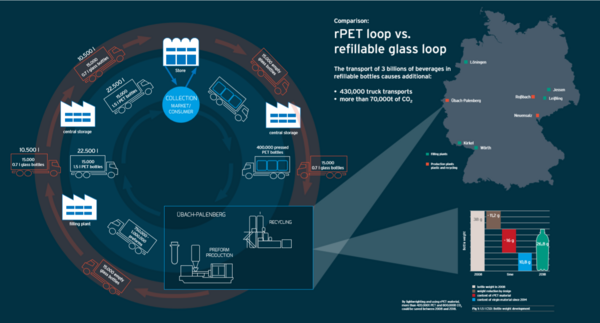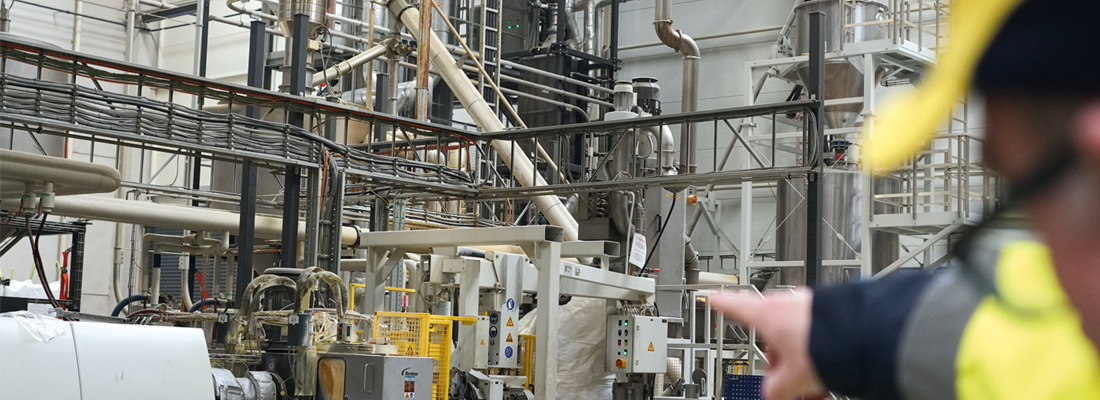

A visit to Schwarz Produktion's PET recycling plant
Once recyclable - always recyclable: the modern multi-use PET recycling system
Beverage packaging is divided into two major categories: single-use and multiuse or refillable. Refillable bottles are returned and reused after the consumer has finished their drink, while single-use bottles are simply disposed of. Is one approach better for the environment than the other? What about for PET bottles? Do these categories even apply? These questions were on our minds during our visit to the PET recycling plant in ÜbachPalenberg in western Germany.
The plant belongs to Schwarz Produktion, which is part of the Schwarz Group, the company behind the discount supermarkets Lidl and Kaufland. With around 12,000 stores in 30 countries, more than 400,000 employees, and sales of over 100 billion euros, the group is one of the leading trading companies worldwide.

It’s no secret in the industry that the Schwarz Group is involved in PET recycling, but the company has done little to publicise its approach or provide information about how much it collects, sorts and recycles. Until now. Last autumn, an unusual advertising campaign attracted a lot of attention. Readers of major German political magazines and business journals were confronted with prominent full-page ads bearing the slogan “Once a bottle, always a bottle”. Luxury goods such as expensive watches and perfumes would be right at home on these pages. But PET bottles?
Lidl and Kaufland sell around 3.3 billion PET drinks bottles each year in Germany alone. These discount chains do not use glass for their own brands. A look at the figures makes it clear how important PET is for the Schwarz Group.
Huge numbers of people drink from Lidl bottles every day. For Fabian Neumann, Head of Public Relations & Sustainability at Schwarz Produktion, the most important factor is: “Consumers should feel good about buying our products. When it comes to our PET bottles, our customers can be confident not only in the quality of the product but also in its sustainable credentials.”
So far so good. And not particularly surprising. After all, money talks, and the plastic bashing that’s emerged from the current environmental debate has also affected retailers like Lidl. Neumann and his colleague René Witter, who is responsible for the entire plastics processing and recycling division at Schwarz Produktion, wholeheartedly defend Lidl’s PET bottle. Years of development have allowed the company to shave many grams off the bottle’s weight. “Haptics and stability were always the key concerns”, explains Neumann. In addition, the company has been working with recycled material for years, steadily increasing the proportion of this material used in the preforms that it produces itself. So far that hasn’t really been part of the discussion, but, as we said, things are beginning to change. In 2018, the Schwarz Group launched REset Plastic, a sustainability campaign that the company refers to as a “plastics strategy”/1/.
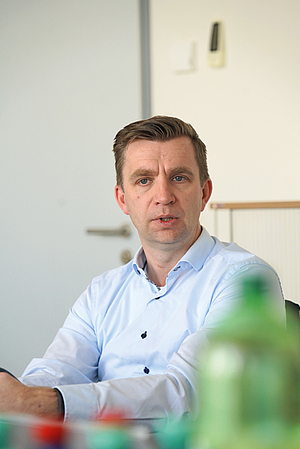
Disposable? Recyclable!
Schwarz Produktion launched its second PET recycling plant in Übach-Palenberg in 2016. The plant boasts a full range of equipment: granulators, washing stations, machines for sorting flakes, extrusion and injection moulding machines — and a lot of conveyor belts. Siegfried Mahr, who has managed the plant since 2018, explains: “We are working with a complex, state-of-the-art system. Waste goes in and food packaging comes out.” His brief summary gets right to the heart of the matter, because this approach is new. Recycling plants typically produce granules or flakes, which are sold and transported before undergoing further processing elsewhere. But this is not the case in Übach-Palenberg, where granules are only an intermediate product. We exit the recycling area and pass through the hygiene station, where we put on hair nets and disinfect our hands before continuing our tour. In the next hall, injection moulding machines process the granules into preforms. Waste goes in, food packaging comes out. Mahr explains: “It took us a while to realise that this is not your typical recycling plant. Our employees are proud to produce such a high-quality end product.” The plant is certified in accordance with the stringent requirements for food safety.
__________________________________________________________
FACTS & FIGURES
SCHWARZ GROUP
# 104 Bil. € turnover # more than 12.100 stores # more than 429.000 employees # in 30 countries
SCHWARZ PRODUCTION Beverages
# approx. 1.200 employees # 3.7 Bil. fillings # more than 300 different products # in 25 countries
SCHWARZ PRODUCTION Plastics & Recycling
# approx. 350 employees # 3.2 Bil. preforms/year # more than 40.000 t rPET/year
__________________________________________________________
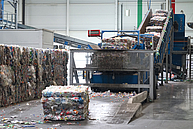
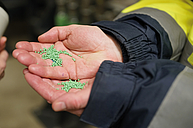
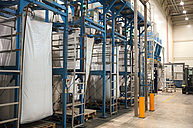
Environmental footprint: material consumption, recycled content, transport distance
The company is committed to publishing this data and keeping its customers informed. “More education is needed”, says Neumann. “There is a lot of confusion and our campaigns aim to change that.” He continues: “The life cycle assessments that form the basis for the German government’s recommendations are from 2002. Based on this information, refillable glass bottles are considered the most sustainable drinks packaging. But a lot has changed since then, which is why we urgently need new life cycle assessments.
''The lighter the bottle, the more difficult it is to produce using recycled material. We have overcome many obstacles.'' - René Witter
According to our internal assessments, a lot has changed in terms of the sustainability of an individual PET single-use bottle.” These assessments take a variety of factors into account. For example, constant reductions in bottle weight mean that less material and energy are required for production. They also have a significant impact on transport, since a lorry can carry far more empty, crushed PET bottles than empty refillable PET or glass bottles. The same is true for filled bottles. Citing the numbers for the German market, Witter explains: “If the three billion bottles that we produce were refillable — regardless of whether they were glass or PET — this would require more than 400,000 additional lorry trips on German roads.”
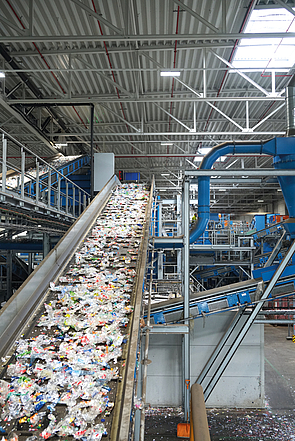
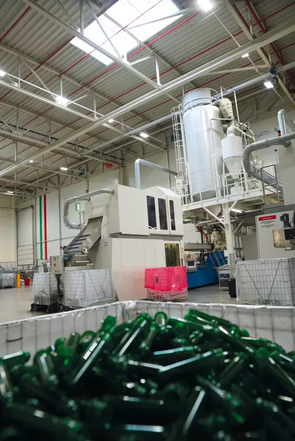
Fig 2: From PET bales to PET pellets Fig 3: Preform production
Schwarz Produktion operates five beverage plants in Germany. According to the company, filled PET bottles are transported no more than 180 km from the filling plant to the Lidl warehouse. While it’s possible to optimise the logistics of refillable schemes using standardised bottles in the same way, standardised bottles are no longer in style in Germany. Instead, there has been a years-long trend toward customised refillable bottles. In order to remain part of the cycle, these bottles must be returned to the place where they were filled, which requires a lot of diesel. Yet another reason why Fabian Neumann is eagerly awaiting new life cycle assessments.

Fig 4: Advertisement „Once Bottle - Always Bottle“.
(Source: Magazine DER SPIEGEL, 42, 12 Oct 2019, p. 57)
The Schwarz Group is not the only company promoting its strategy for a sustainable PET recycling loop. Many years ago the Austrian company Vöslauer Mineralwasser introduced PET bottles with the intention of creating a closedloop system, where the material is reused (see connecting comPETence TWO:19). The company has steadfastly pursued this strategy and publicised it from the outset, but it has never been more relevant than today. In 2018, the Berlin-based start-up share GmbH, which includes mineral water among its products, made headlines by urging its customers to engage in the social practice of sharing. The share water bottle (1 l, 31.5 g) is still advertised on the company’s website as the only German water bottle made of 100% recycled plastic. rPET figures also feature prominently in the sustainability goals of major brands. It’s rare to find a press release today that doesn’t mention sustainability. Lidl has taken notice and is now promoting its own efforts. “In 2008, our 1.5 l bottle weighed 38 g; today it’s down to 26.8 g”, Neumann enthuses. “Our Saskia bottle for non-carbonated mineral water has been made of 100% recycled material since 2018. And our other bottles include more than 50% recycled content.” Witter adds: “The lighter the bottle, the more difficult it is to produce using recycled material. We’ve overcome many obstacles and today, we stand behind our recycling system and the product — our PET bottle — one hundred percent.”

Waste? Recyclable material!
The Schwarz Group’s PET system appears to be autonomous. The bottles are produced and filled in one of the group’s five beverage plants and then transported via the regional companies to the stores by lorry. No bottle travels further than 180 km. When customers buy a singleuse PET bottle, they pay a €0.25 deposit, which is returned when they bring the empty bottle back to the shop’s bottle return machine. The lorry that delivered the full bottles then collects the empty returned bottles once they have been crushed. Transport to the two recycling plants — one in eastern and one in western Germany — has also been optimised. With its high rate of returned bottles, the German deposit system supplies a steady stream of materials, which is what made Lidl’s PET recycling loop possible in its current form. According to Neumann, “The good thing about the stream of deposit bottles is that it is food-grade material.” Lidl recycles approximately 2 billion PET bottles per year.
''The good thing about the stream of deposit bottles is that it is food-grade material.'' - Fabian Neumann
The company’s beverage plants were originally only for bottling, but the switch from glass to PET early on set the course for subsequent developments. The company invested in its own stretch blow moulding machines and began producing bottles for its own brands. Injection moulding machines for the preforms were added later. Producing caps in-house, too, makes for a consistent approach, but it isn’t as easy as it sounds. The plastic materials used in caps bring a host of new challenges which pushed the bottling plant to become a plastics processing plant. But it didn’t stop there. Since the empty bottles were collected at its own stores, the group asked itself: “Can we handle the recycling ourselves?” The answer: yes, we can. That was in 2011. In the same year, the group took over a recycling plant in Neuensalz in the German federal state of Saxony. Recyclable material in, granules out. Five years later, the group began operating a second recycling plant in Übach-Palenberg, in the far west of Germany. Once again they took things a step further. Whereas the first plant only produced granules, the process in the new plant was optimised to enable the output of preforms. Recyclable material in, food packaging out.

Fig 5: Otto Appel, Siegfried Mahr, René Witter, Fabian Neumann (from left to right)
“We are a commercial enterprise”, Neumann says. “Of course these were worthwhile investments that have paid off financially, but we’ve also made great strides in terms of sustainability. Throughout the years, we have systematically pursued two goals: reducing weight and increasing the proportion of recycled material.” In doing so, the Schwarz Group has kept a steady focus on cost leadership and its environmental footprint.
''Without plastic packaging, several billion euros’ worth of food would have to be destroyed each year!'' - Fabian Neumann''
According to Neumann, “PET bottles in Germany currently contain 28 to 29 percent recycled content, which means that they already exceed the minimum level of 25 percent rPET required from 2025 onwards under the new EU rules for single-use plastics.”/2/ He says that Lidl has made a major contribution towards efforts to comply with these rules thanks to the especially high level of recycled content in its latest bottles. Witter had hoped that the EU’s Green Deal /3/, which was unveiled in December 2019, would include plans for a Europe-wide collection system to promote highly effective recycling across national borders.
Facts and uncertainty
When it comes to the current plastic crisis, Neumann and Witter believe that it’s hard for people to get a clear look at the facts. The plastics division of the Schwarz Group is also working to promote acceptance of the facts at the political level — and here, too, it is encountering resistance sparked by images of plastic waste. It’s a complex topic and life cycle assessments can’t be explained in a headline. It’s easier to say that plastic is bad. Witter points to the issue of plastic bags. After the EU imposed a ban, there were studies of the alternatives. According to the findings, paper and fabric have to be used far more often to achieve the same environmental footprint as a plastic bag that’s only used once. The presence of microplastics in mineral water is also a subject of debate. Microplastics have been found in both glass and PET bottles. According to a study of 38 different beverage packages / 4/, the water in PET single-use bottles was the least affected, while the highest levels of microplastics were found in refillable glass bottles. The reasons for this are unclear. The complexity of the issue leads to uncertainty for consumers. It is difficult to ensure that the facts reach them. In Neumann’s opinion, efforts to avoid plastic overlook an important point: protecting the products. People originally celebrated the decision not to wrap organic cucumbers in plastic, but today many complain about the reduced shelf life. According to Neumann, “Without plastic packaging, several billion euros’ worth of food would have to be destroyed each year because it spoils too quickly. Shelf life would decline dramatically, starting during transport.”
Designing with recycling in mind
Companies’ internal decision-making processes are changing. Whereas marketing departments once had the final word on package design, today sustainability managers are often responsible for such decisions. Changes in consumer behaviour seem to have contributed to this development. Companies were once loathe to offer consumers anything that looked like it might be recycled, but packaging that appears recycled is now preferred. Witter points to contemporary packaging for potato or vegetable crisps as an example. Today the bags are matte, rather than glossy, and are often printed to resemble wood. “This look is currently very popular with customers”, says Witter.
When Neumann and Witter consider the future of the material stream, two issues stand out: multilayer and black-tinted PET packaging. While multilayer juice bottles are especially challenging to sort, technical solutions exist. Witter explains: “We should do everything in our power to collect these bottles via the deposit scheme. But before we can incorporate them into the recycling system, the bottle design must be modified to make sure it is suitable. This issue highlights the need for uniform minimum standards for manufacturing and recycling in the industry. The German Quality Association PET /5/ has been working on developing such standards for deposit bottles for a number of years. Discussions with juice distributors are also needed.” Witter has a similar take on the issue of black plastic. Machines that can detect black PET packaging do already exist and additives are being developed. Nevertheless, he believes that designing with recycling in mind offers plenty of untapped potential.
Disposable — reusable — recyclable. When it comes to PET, one thing is clear. The PET bottle-to-bottle loop is a cuttingedge multi-use system for conserving resources. Once recyclable, always recyclable, or: recyclable material in, food packaging out.
_________________________________________________________
/2/ https://ec.europa.eu/commission/news/single-use-plastics-2018-may-28_en
/3/ https://ec.europa.eu/info/strategy/priorities-2019-2024/european-green-deal_en
/4/ Chemisches und Veterinäruntersuchungsamt Münsterland-Emscher-Lippe, Jan. 2018
5/ Gütegemeinschaft Wertstoffkette PET-Getränkeverpackungen e. V.
The comPETence center provides your organisation with a dynamic, cost effective way to promote your products and services.

magazine
Find our premium articles, interviews, reports and more
in 3 issues in 2026.


